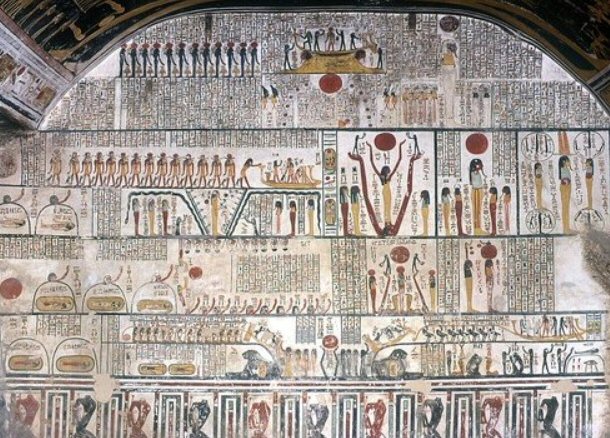
After the death of Akhenaten, signaling the end of the Amarna Period, a new set of books related to the afterlife emerged. These books centered on Nut (the sky goddess who swallows the Sun-god in the evening) only to give birth to him in the morning. During the day, the Sun-god passes visibly along her body, but during the night, he travels through her body back to the place where he will rise once more. Beginning with Ramses IV, two of the Books of the Heavens (Sky) were usually placed next to each other on the ceilings of royal tombs. They depicted a double representation of Nut, back to back. The focus is on the Sun-god, other heavenly bodies are also included. Generally speaking, the books emphasize cosmography and the topography of the sky, a topic which had its beginnings in the Book of the Heavenly Cow, though the astronomical ceilings found in the tombs of Seti I (KV17) through Ramses III (KV11) can also be viewed as precursors to the Books of the Sky (Heavens). These books are generally considered to consist of the Book of Nut, the Book of the Day, and the Book of the Night.
Book o Earth
Emerging in the New Kingdom, this funerary composition lacks an original Ancient Egyptian title. It has actually been called by a number of names, depending on the scholar. Piankoff refers to it as 'La Creation du Disque Solaire' (The Creation of the Sun Disk). Hartwig Altenmuller calls it 'Buch des Aker' (Book of Aker), while Erik Hornung names it 'Buch von der Erde' (Book of the Earth) and Barta refers to it as 'Erdbunch' (Earth-Book).

